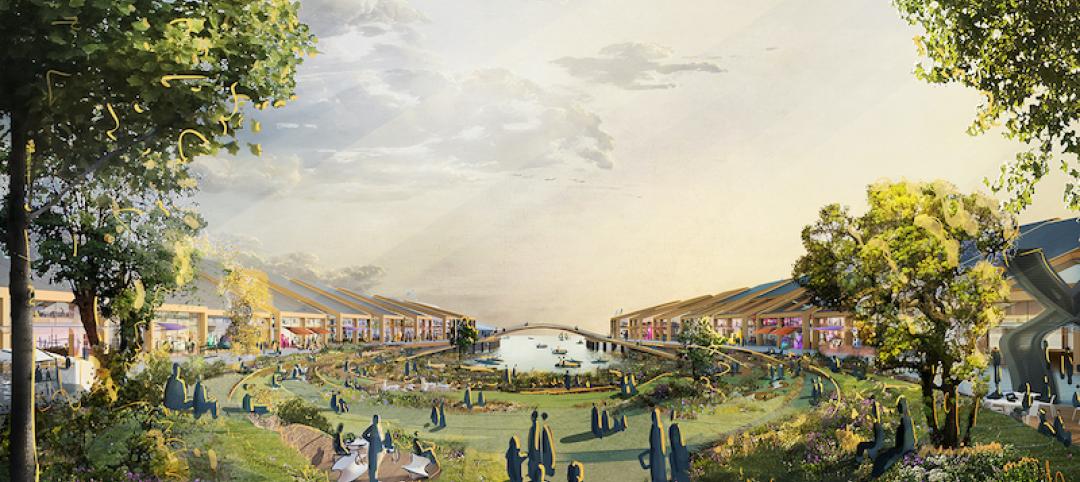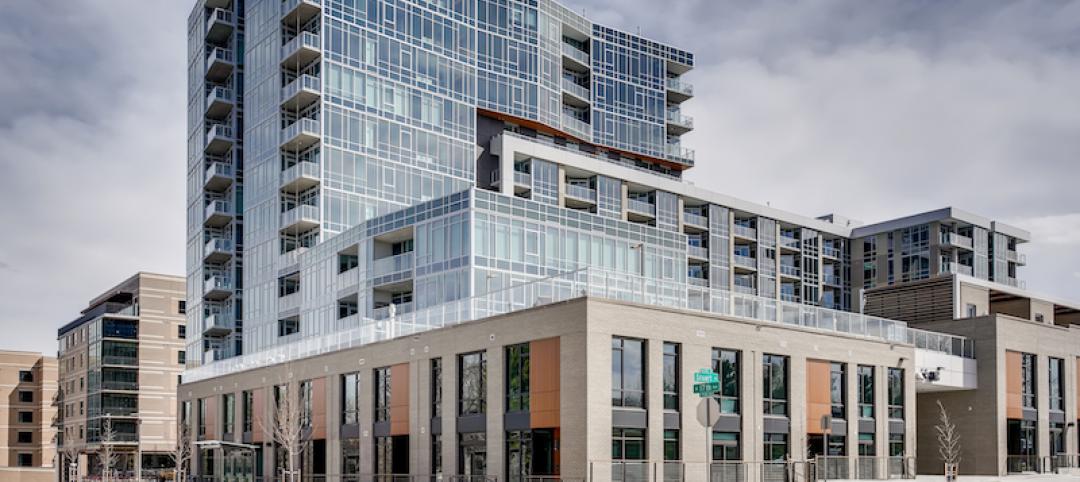A Buro Happold-led team recently completed work on standards for sustainable design and construction performance for the University of Southern California.
The document sets out sustainable strategies for the design and construction of new buildings, renovations, and asset renewal projects. The institution’s sustainable construction strategy includes a key focus on the chemical health and embodied carbon of building materials.
The new guidelines establish process management guidance for project teams to understand their roles and responsibilities, as well as key sustainability activities required for tracking and reporting. A section on life-cycle cost analysis (LCA) provides a basis for USC to develop cost-effective design options over the lifetime of a project along with assessing the environmental impact of project materials.
Development of the guidelines makes USC one of the first campuses to adopt a formal policy for life-cycle analyses to tackle embodied carbon.
More details on USC's Sustainable Design and Construction Guidelines
Here is the full press release from Buro Happold:
Buro Happold, a sustainability leader known for creating long-range plans and benchmarks for leading institutions, companies and municipalities worldwide, has led a team that recently completed key standards for environmental design and construction performance for the University of Southern California (USC).
Buro Happold led the sustainability guideline development process for the University of Southern California with its acclaimed human-centric approach — “ensuring that the built environment touches the earth lightly while also caring for its occupants,” says the firm’s leaders. Also involved in the blue-ribbon team creating the guidelines are the consulting partners Perkins&Will, civil engineer Psomas, as well as AHBE | MIG and David Neuman of Neu Campus Planning.
“Prepared in collaboration with key stakeholders across USC — from faculty and staff to student interns — the USC Sustainable Design & Construction Guidelines advance the University’s commitment to sustainable strategies for the design and construction of new buildings, renovations, and asset renewal projects with impacts across multiple areas,” according to Christopher J. Toomey, Vice President & Executive Director, USC Facilities Planning & Management. He added that the guidelines work alongside the USC Facilities Design Guidelines and many of the key goals set in the university commitment document, Assignment: Earth, the 2028 Sustainability Framework covering such areas as zero waste, water reduction and carbon neutrality.
The multidisciplinary firm Buro Happold, also known as a leader in higher education strategy, campus planning and sustainable strategy and building design, was selected through a competitive process to develop these new sustainable design guidelines for USC, an urban research university ranked among the best in the United States. Buro Happold has created campus-wide standards and overarching sustainability plans for other universities globally, for private corporations such as Aviva Partners, as well as for local governments from the County of Los Angeles to New York’s Battery Park City.
For USC, the new guidelines establish process management guidance for project teams to understand their roles and responsibilities, as well as key sustainability activities required for tracking and reporting. A section on life-cycle cost analysis (LCA) provides a basis for USC to develop cost-effective design options over the lifetime of a project as well as a method for assessing the environmental impact of project materials.
“USC has embarked on a collaboration with students, faculty and staff from across campus on this development of laudable and comprehensive sustainability guide-lines that will guide new construction and renovations, enabling the campus environ-ment to reflect and achieve the university’s sustainability ambitions,” says Kirsten Melling, Buro Happold sustainability associate.
Perkins&Will worked with Buro Happold to co-create a guideline development process that meaningfully engaged stakeholders, and then focused on defining material strategies and guideline implementation procedures. “The team set out strategies for sustainable construction, focusing on both the chemical health and embodied carbon of building materials,” says Leigh Christy, principal of Perkins&Will. “After working with Buro Happold and the team, we’re proud to say that USC will become one of the first campuses to adopt a formal policy for life-cycle analyses to tackle embodied carbon.”
Over recent years, sustainability guidelines and assessment tools have come to be an essential component of long-term campus planning and institutional strategy, according to Melling, and Buro Happold has assisted dozens of institutions worldwide on similar initiatives. Noting their use by many institutions, she adds that the guidelines are becoming increasingly valuable to guide specific aspects of development, such as decarbonization. This shift allows organizations to direct development in alignment with sustainability priorities and provides clear direction to design and construction teams on performance and design aspirations for their built environment.
Related Stories
Sustainability | Nov 11, 2020
Passive house design: A key to sustainable community building
Passive House is a high-performance building standard that emphasizes tightly insulated enclosures, heat recovery, and monitors airflow to reduce energy consumption.
Sustainability | Sep 30, 2020
U.S. Green Building Council, Green Business Certification Inc. expand resilience resources to support the green building industry
LEED and GBCI rating systems drive resilience-enhancing strategies to help businesses and governments mitigate climate risks.
Sustainability | Sep 29, 2020
Heatherwick Studio creates a new concept for San Francisco’s Piers 30-32
The new vision is dubbed The Cove.
Sustainability | Aug 13, 2020
The largest single sloped solar array in the country completes
The installation sits atop Pittsburgh’s Mill 19.
Sustainability | Aug 11, 2020
Sustainability is key for Denver Water’s modernized campus and distribution system
The utility is showcasing a new admin building and a water reuse plan that’s a first for the state.
Sponsored | Voice of the Brand | Jul 2, 2020
Solving the Building Envelope Challenge
Today, solutions for the building envelope need to meet exacting standards on two equally important fronts – long-term performance and enduring aesthetic appeal. In this article, CENTRIA demonstrates how its products meet the standard in two different scenarios – construction of a new hospital in Asheville, North Carolina, and the addition to a popular museum in Pittsburgh.
Sustainability | May 11, 2020
Watch Bjarke Ingels discuss Mars Science City, BIG's prototype Martian city in Dubai
Ingels believes designing for Mars will help us reach sustainability goals on Earth.
Multifamily Housing | May 8, 2020
'Lakehouse' is the first multifamily project in Colorado to receive WELL Precertification
Stantec and Muñoz + Albin are the project's architects.
Sustainability | Apr 28, 2020
Could a virtual 'city-forest' help solve population density challenges?
The project will house 200,000 people.
Sustainability | Apr 16, 2020
This will be the largest Living Building in the world
ZGF Architects is designing the building.

















